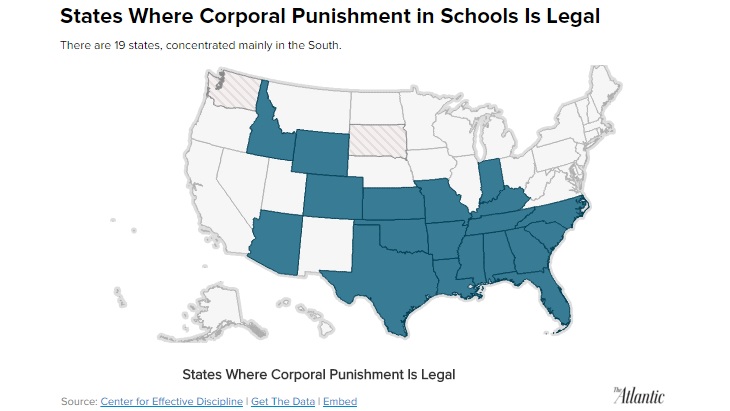As archaic as it may seem, the practice of spanking students is still allowed in 19 states, according to the Center for Effective Discipline, an anti-spanking organization.
In those states, many cities — including Atlanta, Dallas, Memphis and others — have banned the practice in their schools. Liability for school districts has been cited as a reason to end spanking, along with questions over its efficacy and morality, as reported by The Atlantic’s Melinda Anderson.

Texas allows parents to sign a waiver that exempts their children from corporal punishment.
Nationwide, almost 167,000 students received corporal punishment in the 2011-2012 school year, according to the most recent data from the Department of Education. The vast majority, 78 percent, of those students were male.
Black students also receive a disproportionate share of spankings. They make up 16 percent of the public school population, but 35 percent of students getting spanked.
Despite being banned in most states, corporal punishment is supported by most Americans — with a few caveats. Nearly 75 percent of Americans say corporal punishment is okay if it involves only spanking, according to an October 2014 Reuters/Ipsos poll. Roughly 60 percent say corporal punishment is okay if the child is of a certain age, if it doesn’t leave a physical mark or if it doesn’t involve an implement like a paddle, cane or belt.
Jason Russell is a commentary writer for the Washington Examiner.
Corporal punishment is ok if its is spanking only: InsideGov

